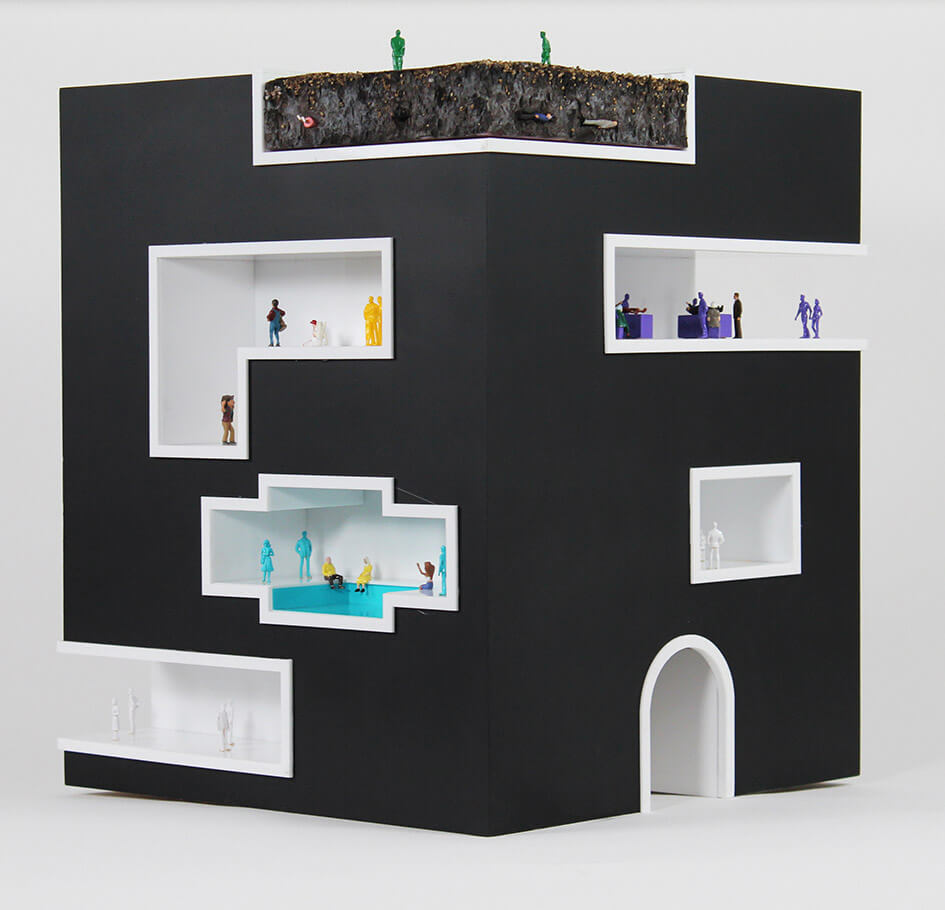Our studio is called the Office of Life + Art because we see a need to create beautiful and startling visions of how humans can live with other organisms, and each other, on planet Earth. As a species, humans need to get better at life and art. Humans are sculpting the biosphere of the planet to suit their needs and desires, and not doing it very well.
In the 21st century humankind will continue to refine, deploy and resist techniques for shaping the living world. The scope, scale and speed of changes we can make to environments, organisms and genes is unprecedented. Our transportation networks stitch together much of the planet, shuttling humans and non-humans to various locations around the globe. Our extractive industries and global supply chains uncover and convey material from one terrestrial ecosystem to another, leaving behind trails of pollution in the air, water and land. We are leaving behind some very ugly marks.
Our studio is called the Office of Life + Art, with a nod (or perhaps a headbutt) to the Fluxus movement’s adage 'art equals life'. After a decade of creating work that was primarily critical in mode, we feel an urgent need to transition to a more visionary mode.
Imagining speculative futures is a hot (not-so) new trend in both art and design circles. A whole field of speculative design, supported by books, conferences, and academic programs, has emerged as designers wrestle with imagining what lies ahead. However, the proposals that surface from the field of speculative design have often depicted mild dystopias in the guise of cautionary tales. It can be a challenge to tell stories about the futures we really want to have happen, and the failed utopias of the 20th century have cajoled many creative practitioners into remaining cautious and reactive rather than visionary. Dystopias are easy, especially when they take the form of satirical consumer products and services. Utopias are difficult and dangerous, and often exclude those who do not fit in. The techno-utopias dreamed up by Silicon Valley are starting to lose their shine, and reactionary populist uprisings are raging across the globe. Now is the time to explore a plurality of future visions which put life and art front and center.
With our current work and teaching, developing tools and strategies for imagining and prototyping alternative futures has become a key theme. When we teach interaction design at KMD we are less interested in prioritizing the use of digital tools for their own sake, although that is often the expectation students have of what the class will be about. We think the most interesting aspect of interaction design is to analyze, reassemble, and devise new relationships and interactions between humans, living organisms, technologies, and environments. It is the scripting of these interactions where designers can have the most impact. This means dropping the assumption that these interactions necessarily need to be mediated by digital means.
That is why one of our classes at KMD is called “Designing for Non-Human Clients”: Imagine if cities were built to be welcoming to all humans, but also took into account all of a city’s nonhuman residents. This course requires students to do site visits, and talk to different kinds of experts about both a specific organism and the general biospheric flows of the eco-region we inhabit here in Bergen.

At times the class has focused on food, or on the built environment, but it always asks that the students get to know a plant, animal, or micro-organism. What are its needs and desires? How does it make its way in the world? Take a client out to lunch, and observe how it is tied into the water, nutrient and carbon cycles. Then the students have to make a design proposal that creates new interactions between their chosen client and the ecosystem services that support both it and human life.
We have been inspired by students’ diverse and compelling responses to this design brief over the last few years and it has informed our thinking about our work with the Office of Life + Art. Based on learning from the class, we would love to flip one cliche on its head: we would love to turn STEM into FEAST. There has been a veneration of digital technology and a cult of innovation for more than a generation in academia, economies, and the arts. Designers are not immune to this privileging of STEM, (Science, Technology, Engineering, and Math) and innovation over maintenance. Instead, we would propose a different acronym to guide us, that prioritizes the topics, and the order in which designers might want to investigate the world in the 21stcentury. FEAST (Food, Ecology, Art, Science & Technology Eat well and prosper!